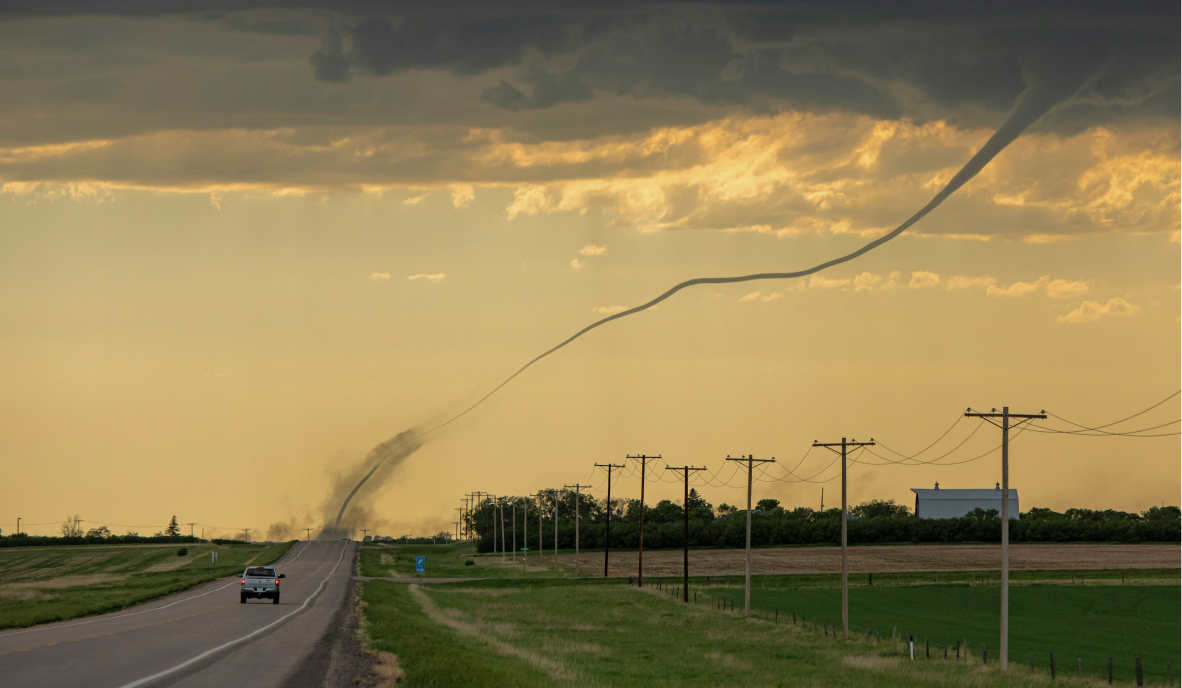How Climate Change is Supercharging Natural Disasters

Join the community





These days, “1-in-1,000-year” storms seem to happen every week. In the first half of 2025, the United States has already experienced 12 billion-dollar weather disasters. From tornadoes and wildfires to flooding and winter storms — nearly every type of natural disaster has struck somewhere across the country.
These natural disasters have been happening for the last 800,000 years, but in the last few decades, human-induced climate change has made these disasters more dangerous and frequent.
As we burn more fossil fuels like oil, gas, and coal, more greenhouse gases end up in the atmosphere and the oceans. These gases trap heat, which drastically shifts the climate, making it more prone to more frequent, more extreme weather events.
By understanding how climate change is amplifying dangerous weather events, we can better prepare and advocate for systemic changes to mitigate the climate crisis.
{{cta-join2}}
More Common Flash Floods
As more heat gets trapped in the air, the air becomes warmer. Warmer air causes more water to evaporate, and this warm air can hold more water as well. This water eventually condenses and falls in the form of an extreme rainstorm. Some models show that these extreme rainstorms can also stall for an extended period of time, inundating an area with more water than it can handle. These storms can also hit after an extended period of heatwaves or drought (known as weather whiplash), which makes the soil hard and dry. So when it rains, the soil can’t soak up the excess water, leading to flooding.
More Dangerous Heat Waves
Unlike big storms, heat waves’ destruction is less visible, but no less dangerous. In fact, heat waves are the most deadly natural disasters. Even if people have air conditioning in their homes, long-term strains on power grids make heat waves even more risky.
As the temperatures across the world rise due to climate change, heat waves are increasing in frequency and in intensity. A lot of American cities are witnessing more 100-degree days. Heat waves have reached the poles as well. Scientists found out that extreme heat in Siberia, with temperatures nearing 100 degrees in the Arctic Circle, was made 600 times more likely because of greenhouse gas emissions.
More Intense Hurricanes
Climate change is making hurricanes more intense and dangerous. Warmer ocean waters are fueling storms, making them grow faster and larger, while rising air temperatures help them hold more moisture, leading to heavier rainfall.
At the same time, sea levels are rising, which makes storm surges more destructive and increases the risk of flooding. In 2024, 11 hurricanes formed in the Atlantic, with five reaching major hurricane status. Two of them, Beryl and Milton, even peaked as powerful Category 5 storms. As these trends continue, NOAA now predicts most hurricane seasons will be “above normal,” with more frequent and severe storms threatening coastal communities.
Longer Wildfire Seasons
Climate change creates hotter, drier conditions that make it easier for fires to start and spread. Human-caused carbon emissions have doubled the number of large fires since 1984, and studies confirm climate change is the main force behind longer, more severe fire seasons. In the Western U.S., dry and hot conditions are becoming more severe with extreme droughts and heat waves. Warming temperatures also fuel pest outbreaks that kill trees and leave behind flammable debris. These fire risks are no longer limited to the West — states on the East Coast are now seeing more fire weather days each year.
Tornadoes May Be More Unexpected
Scientists haven’t confirmed a direct link between climate change and more frequent or stronger tornadoes, but unusual patterns are raising concerns. Tornadoes are forming in new areas, like the eastern U.S., and appearing during unexpected times of year. In December 2021, a rare winter outbreak killed nearly 100 people across multiple states — an event that caught many off guard. Warmer winter temperatures may be helping to create tornado-friendly conditions, though researchers are still studying the connection. As the climate shifts, these unpredictable and deadly storms are becoming harder to prepare for.







.jpg)




